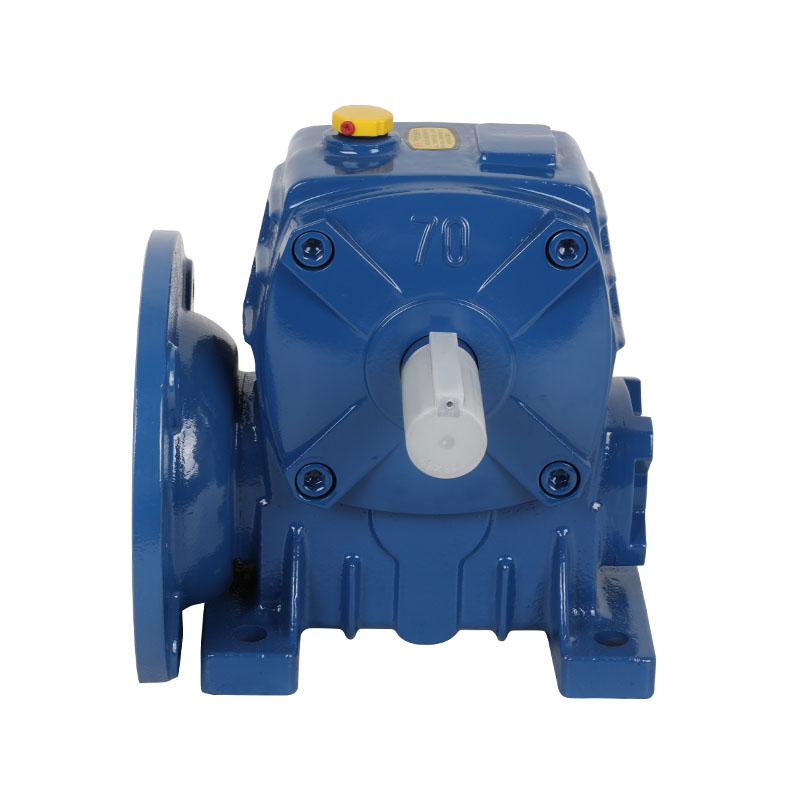The transmission efficiency of WP worm gear reducer is affected by many factors, which work together to determine the overall performance of the reducer. The following are the main influencing factors:
Design factors
The materials of the worm wheel and worm: The hardness, wear resistance, corrosion resistance of the materials and the friction coefficient between them will directly affect the transmission efficiency. For example, worm wheels are often made of wear-resistant materials such as tin bronze, and worms are often made of high-strength steel. These choices are designed to optimize friction performance and wear resistance.
Precision and meshing quality: The manufacturing accuracy and meshing quality of worm gears and worms directly affect the energy loss during the transmission process. High-precision machining can reduce friction loss and meshing loss, thereby improving transmission efficiency.
Reduction ratio and transmission ratio: The choice of reduction ratio will also affect the transmission efficiency. Generally speaking, the larger the reduction ratio, the lower the transmission efficiency may be, because more energy is consumed during the transmission process.
Operation factors
Lubrication condition: Lubrication is the key to reducing friction loss and improving transmission efficiency. Good lubrication can reduce friction and wear between worm gears and worms, and reduce energy loss. Therefore, it is crucial to select appropriate lubricants, maintain the normal operation of the lubrication system, and regularly check and replace the lubricants.
Load conditions: The size and nature of the load also affect the transmission efficiency. Under heavy load or high load changes, the transmission efficiency may decrease. This is because the increase in load will lead to increased friction loss and meshing loss.
Operating speed and temperature: The speed of operation and the temperature of the working environment also affect the transmission efficiency. Excessive operating speed may lead to poor lubrication and increased friction, while excessive temperature may reduce the performance of the lubricant and the hardness of the material, thereby affecting the transmission efficiency.

Other factors
Installation and maintenance: Proper installation and regular maintenance can ensure the normal operation and optimal performance of the worm gear reducer. For example, during installation, ensure that the alignment between the worm gear and the worm is good to avoid additional friction and vibration; during maintenance, the lubrication system, fastening bolts and gear wear should be checked regularly to detect and deal with problems in time.
Use environment: The use environment of the worm gear reducer will also affect its transmission efficiency. For example, when used in a humid, corrosive or dusty environment, special protective measures are required to protect the reducer and its internal components to avoid performance degradation caused by environmental factors.
The transmission efficiency of the WP worm gear reducer is affected by design, operation and many other factors. In order to obtain higher transmission efficiency, it is necessary to comprehensively consider these factors in design, selection, installation, maintenance and use environment, and take corresponding measures to optimize performance.

 English
English русский
русский bahasa Indonesia
bahasa Indonesia
